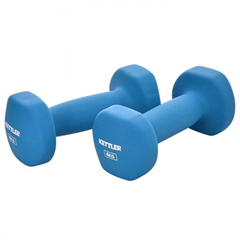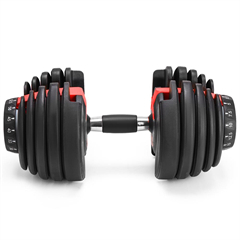Note: Always consult with a healthcare provider before starting a new exercise program, especially if you have any underlying medical conditions or concerns.
Equipment: Dumbbells (light to moderate weight, depending on individual strength levels)
Warm-Up (5-10 minutes): Begin with a gentle warm-up to increase blood flow and prepare your muscles and joints for exercise. This can include marching in place, arm circles, or light leg swings.
Dumbbell Workout: Perform each exercise for 10-15 repetitions (reps) with a light to moderate weight. Complete 2-3 sets of each exercise, resting for 30-60 seconds between sets.
- Dumbbell Squats:
- Hold a dumbbell in each hand by your sides.
- Stand with your feet shoulder-width apart.
- Perform squats by bending your knees and hips while keeping your chest up.
- Rise back up to the starting position.
- Dumbbell Seated Shoulder Press:
- Sit on a sturdy chair with a backrest.
- Hold a dumbbell in each hand at shoulder height.
- Press the dumbbells overhead until your arms are fully extended.
- Lower the dumbbells back to shoulder height.
- Dumbbell Bent-Over Rows:
- Sit on the edge of a chair with your feet flat on the floor.
- Hold a dumbbell in each hand with your palms facing your thighs.
- Bend forward slightly at your hips, keeping your back straight.
- Pull the dumbbells towards your hips, squeezing your shoulder blades together.
- Lower the dumbbells back down and repeat.
- Dumbbell Leg Raises (Chair Leg Raises):
- Sit on a chair with your feet flat on the floor.
- Hold a dumbbell between your feet.
- Lift your feet off the ground, straightening your legs.
- Lower your feet back down without touching the floor.
- Dumbbell Bicep Curls:
- Sit or stand with a dumbbell in each hand, palms facing forward.
- Keep your elbows close to your sides and curl the dumbbells up towards your shoulders.
- Lower the dumbbells back down with control.
Cool-Down (5-10 minutes): End your workout with gentle stretching exercises to improve flexibility and reduce the risk of muscle soreness. Focus on stretching major muscle groups like your legs, arms, chest, and back.
Safety Tips:
- Start with light weights and gradually progress as your strength improves.
- Use proper form and technique during each exercise.
- Maintain steady breathing throughout your workout.
- If an exercise causes pain or discomfort, stop immediately and consult with a healthcare provider or fitness professional.
This workout is a basic starting point for seniors, but it’s essential to individualize it based on your fitness level and specific needs. A qualified fitness trainer or physical therapist can provide personalized guidance and adjustments to create a safe and effective dumbbell workout routine for seniors.


















